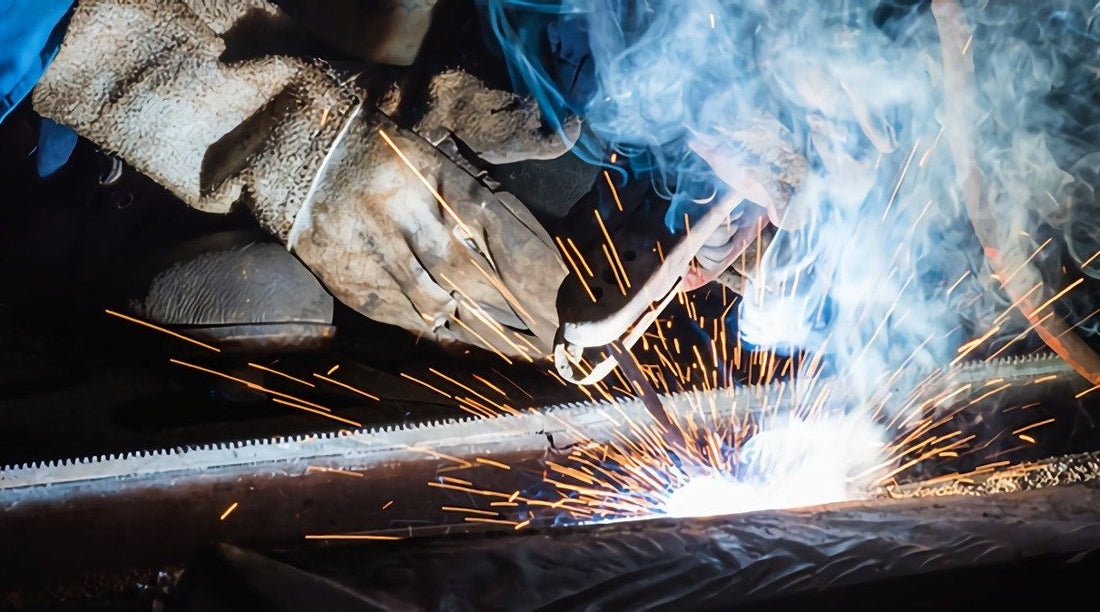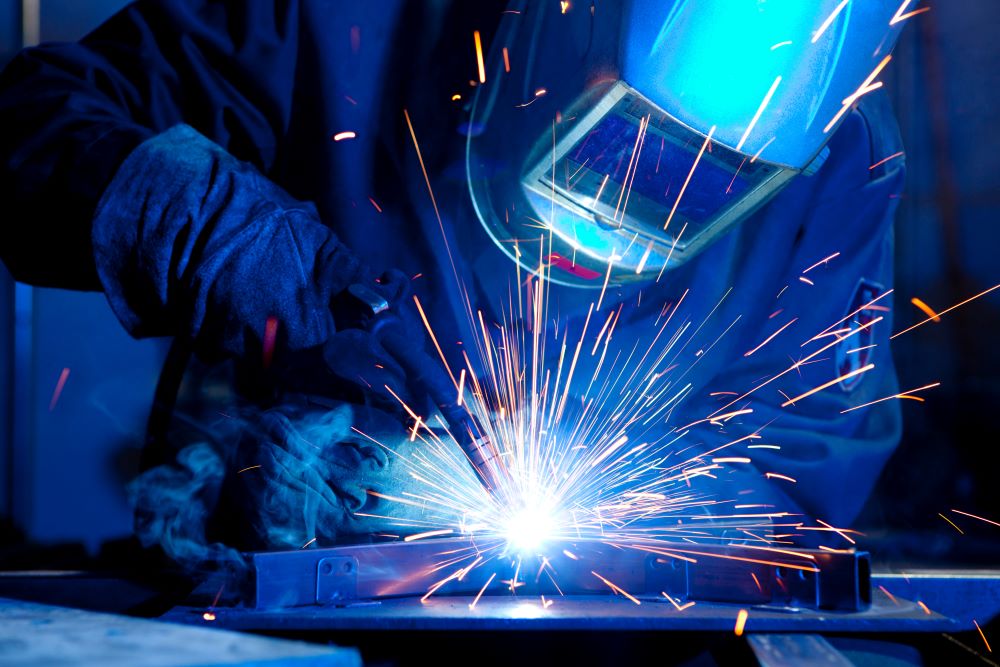Typical Welding Repair Work Issues and Just How to Address Them Properly
Welding repairs typically run into a variety of problems that can jeopardize the honesty of the end product. Typical issues consist of poor infiltration, porosity, and imbalance, to name a few. Each problem offers unique challenges that call for specific methods for resolution. Recognizing these concerns is essential for welders aiming to enhance their skills and end results. This conversation will discover these common welding fixing concerns and efficient approaches to address them.
Poor Infiltration
Inadequate penetration happens when the weld metal fails to completely fuse with the base product, leading to weak joints and possible structural failings. This problem frequently originates from insufficient warm input, wrong electrode angle, or incorrect welding rate. Welders may come across poor infiltration as a result of a mistake of the required specifications for a certain material thickness or type. Furthermore, contamination on the base material's surface can prevent efficient bonding, intensifying the problem. To attend to poor infiltration, welders must ensure ideal setups on their devices and preserve a tidy job surface area. Routine inspection of welds is advised to determine any type of shortages early, allowing for timely adjustments and the avoidance of jeopardized structural stability in welded assemblies.
Porosity
Porosity is an usual issue in bonded joints that shows up as little gas bubbles entraped within the weld steel. This problem can endanger the stability of the weld, leading to decreased strength and possible failure under stress and anxiety. Montana Mobile Welding and Repair Belgrade Welding. Porosity usually arises from contamination, dampness, or incorrect welding methods, which permit gases to run away into the liquified weld pool. To resolve porosity, welders ought to ensure proper surface area preparation, keep a tidy workplace, and utilize suitable welding criteria. In addition, selecting the best filler product and securing gas can alleviate gas entrapment. Regular assessment and testing of welds can assist recognize porosity early, ensuring prompt rehabilitative actions are taken, therefore protecting the quality and reliability of the welded framework
Imbalance
Misalignment in welding can occur from various variables, including incorrect configuration and thermal development. Recognizing the source is crucial for effective resolution. Numerous modification techniques are offered to straighten components and assure architectural integrity.
Sources of Imbalance
Welding imbalance frequently stems from a range of underlying issues that can jeopardize structural integrity. One key reason is incorrect fit-up of parts before welding, which can result in gaps and irregular surfaces. Variants in thermal growth during the welding procedure can also result in distortion, particularly if the products being joined have various coefficients of growth. In addition, poor fixturing and clamping might fail to hold parts safely in position, resulting in motion throughout welding. Inadequately conserved equipment, including welding devices and devices, may introduce disparities in the weld bead, further adding to imbalance. Operator error, stemming from inadequate training or experience, can likewise play a significant role in creating misaligned welds.

Improvement Strategies Readily Available
Resolving imbalance properly needs a combination of rehabilitative techniques tailored to the certain concerns available. One typical method is making use of components or jigs to hold elements in the appropriate position throughout welding, guaranteeing constant alignment. Additionally, pre-heating the products can assist decrease distortion and enhance fit-up. For significant misalignment, mechanical realignment techniques, such as making use of hydraulic jacks or clamps, can be utilized to correct the position prior to welding. Post-weld heat treatment may also be needed to ease tensions caused by imbalance. Finally, cautious evaluation and adjustment during the configuration phase can prevent imbalance issues from coming to be substantial problems, advertising a smoother welding process and improving overall structural honesty.
Distortion
Distortion is an usual challenge in welding that can develop from numerous elements, including uneven home heating and air conditioning. Understanding the reasons for distortion is vital for executing effective avoidance strategies. Addressing this concern not only enhances structural integrity but also enhances the overall quality of the weld.
Reasons of Distortion
When subjected to the extreme warmth of welding, products frequently undergo modifications that can lead to distortion. This sensation primarily arises from thermal expansion and tightening during the welding process. As the weld location warms up, the material expands; upon air conditioning, it gets, which can produce internal tensions. Furthermore, unequal home heating throughout a workpiece can aggravate these tensions, resulting in bending or flexing. The kind of important source product likewise plays a substantial duty; steels with varying thermal conductivity and coefficients of growth may react in a different way, causing unpredictable distortions. Bad joint style and poor fixturing can contribute to imbalance throughout welding, boosting the chance of distortion. Comprehending these reasons is essential for effective welding repair work and avoidance strategies.
Prevention Techniques
Efficient prevention techniques for distortion throughout welding focus on regulating warmth input and making sure proper joint layout. Preserving a consistent heat input aids to reduce thermal expansion and tightening, which can lead to distortion. Utilizing methods such as pre-heating the workpiece can also reduce the temperature gradient, promoting consistent home heating. In addition, choosing ideal joint layouts, such as T-joints or lap joints, can enhance security and lower anxiety concentrations. Executing correct fixturing to secure the workpieces in location better help in maintaining positioning throughout the welding procedure. Staggered welding series can distribute heat much more equally, avoiding localized distortion. By applying these techniques, welders can considerably reduce the possibility of distortion and improve the total high quality of their welds.
Breaking
Breaking is a typical problem run into in welding repair work, often arising from different variables such as inappropriate air conditioning rates, material choice, or inadequate joint preparation. The occurrence of cracks can considerably jeopardize the integrity of the weld, leading to possible failures during operation. To address this concern, welders need to first assess the root causes, making sure that materials work and suitably picked for the particular application. Additionally, regulating the cooling price during the welding procedure is necessary; fast cooling can cause tension and result in cracking. Proper joint layout and prep work additionally contribute to decreasing the risk. Executing these methods can improve weld top quality and sturdiness, inevitably lowering the likelihood of breaking in completed weldments.

Incomplete Combination
A substantial problem in welding repair work is incomplete fusion, which occurs when the weld metal does not effectively bond with the base material or previous weld passes - Montana anchor Mobile Welding and Repair Welding. This flaw can bring about weaknesses in the joint, possibly compromising the stability of the bonded structure. Elements adding to insufficient fusion include insufficient heat input, improper welding method, and contamination of the surface areas being signed up with. To address this concern successfully, welders need to guarantee appropriate pre-weld cleansing and surface prep work, along with adjust their welding specifications to accomplish sufficient infiltration and combination. Routine assessment during the welding process can also help determine insufficient combination early, permitting prompt restorative steps to enhance the general top quality of the weld
Overheating
While welding repair services can improve architectural honesty, overheating presents a considerable challenge that can lead to material deterioration. Too much heat throughout welding can modify the mechanical residential or commercial properties of metals, leading to minimized toughness, increased brittleness, and warping. This phenomenon is specifically important in high-stress applications where structural dependability is critical. Recognizing getting too hot can involve aesthetic examinations for discoloration or distortion, in addition to keeping an eye on temperature during the welding process. To minimize the risks associated with getting too hot, welders must utilize proper methods, such as managing warm input, readjusting traveling speed, and utilizing appropriate filler materials. In addition, applying pre- and post-weld warm therapies can assist restore material residential properties and enhance the total top quality of the repair service, making sure lasting performance and security.
Often Asked Inquiries
What Are the Usual Indicators of a Welding Problem?

Just How Can I Evaluate My Welds for High quality?
To evaluate welds for high quality, one can utilize visual inspections, ultrasonic screening, and radiographic techniques. Each technique assures architectural stability, identifies problems, and verifies adherence to defined requirements, inevitably boosting the dependability of the welded joints.
What Safety Preventative Measures Should I Take While Welding?
When welding, one should prioritize safety and security by wearing proper individual safety equipment, making certain appropriate air flow, securing flammable products away, maintaining a tidy office, and recognizing surroundings to avoid crashes and injuries.
Can I Fix a Weld Without Redoing the Entire Joint?
Fixing a weld without redesigning the whole look at this web-site joint is feasible, depending upon the damage (Belgrade Welding). Methods such as grinding, adding filler material, or making use of a welding process can effectively deal with particular defects while maintaining the bordering framework
What Devices Are Important for Reliable Welding Repair Works?
Essential devices for reliable welding repair work include a welding device, cable brush, mill, safety gear, clamps, and filler products. Each tool plays a vital function in making certain top quality and safety throughout the repair service process. Porosity usually arises from contamination, dampness, or improper welding methods, which permit gases to leave right into the molten weld swimming pool. Inadequately kept equipment, including welding devices and devices, might present incongruities in the weld grain, more adding to misalignment. When subjected to the extreme warmth of welding, products commonly undergo modifications that can lead to distortion. Breaking is an usual problem encountered in welding repair services, often resulting from various aspects such as inappropriate cooling rates, material selection, or inadequate joint prep work. A significant concern in welding repair work is incomplete combination, which happens when the weld steel does not appropriately bond with the base product or previous weld passes.